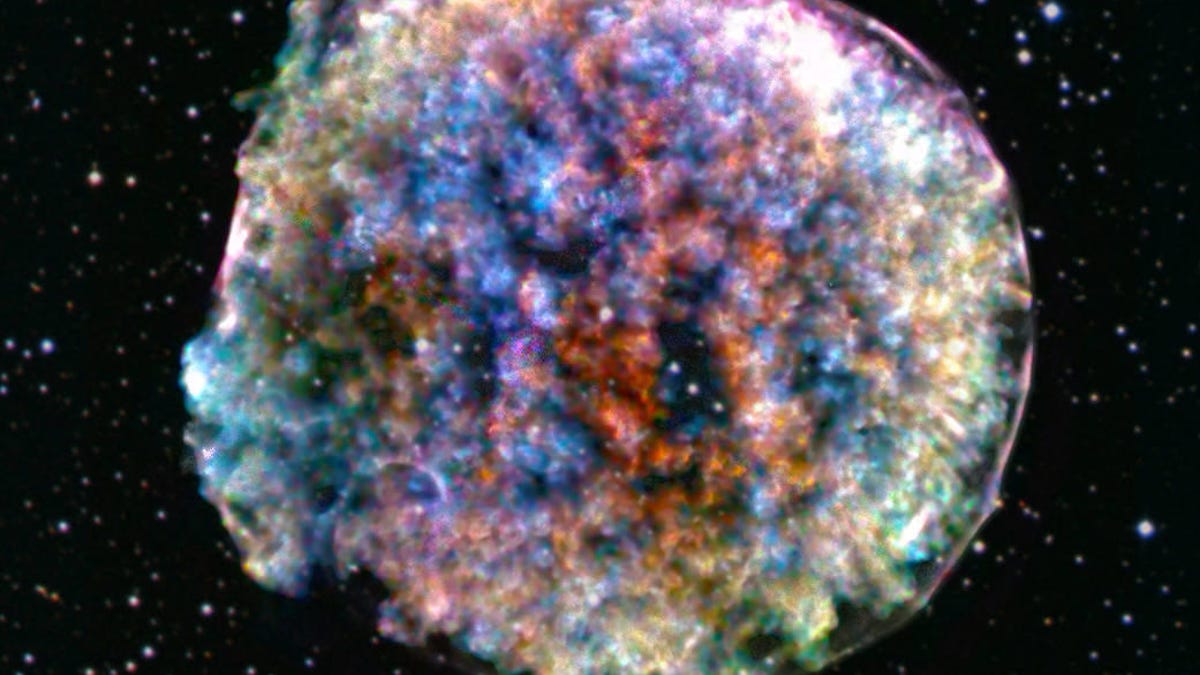A star died and this bizarre space blob was born
NASA's Chandra observatory took a fresh look at the scenic remains of the Tycho supernova.

This composite image shows the Tycho supernova as seen by the Chandra X-ray Observatory.
This colorful blob of stuff in space has a fascinating history. It's a supernova remnant, the leftover bits from after the explosive death of a star. We can see it thanks to NASA's Chandra X-ray Observatory, which can detect X-ray emissions that are beyond the reach of the human eye.
Tycho gets its name from Danish astronomer Tycho Brahe, who noticed its brightness in the night sky back in 1572. NASA released the view of the remnant on Friday and described it as "clumpy and lumpy."
The star's death was spectacular. "This particular supernova was a Type Ia, which occurs when a white dwarf star pulls material from, or merges with, a nearby companion star until a violent explosion is triggered," the Chandra team said in a release.
This 3D-printed supernova model resembles the Chandra X-ray view of Tycho's supernova remnant.
Astronomers are curious about Tycho's clumpiness and whether these shapes formed during the explosion or if they happened later. Scientists ran a computer simulation that suggests the lumps came about during the explosion.
"While scientists are not sure how, one possibility is that star's explosion had multiple ignition points, like dynamite sticks being set off simultaneously in different locations," the observatory team said. You can read more about it in a paper published in The Astrophysical Journal.
A different team published a paper about creating a model of a Type Ia supernova that can be 3D-printed. You may never be able to touch a real supernova, but you can at least hold a model of one in the palm of your hand.

